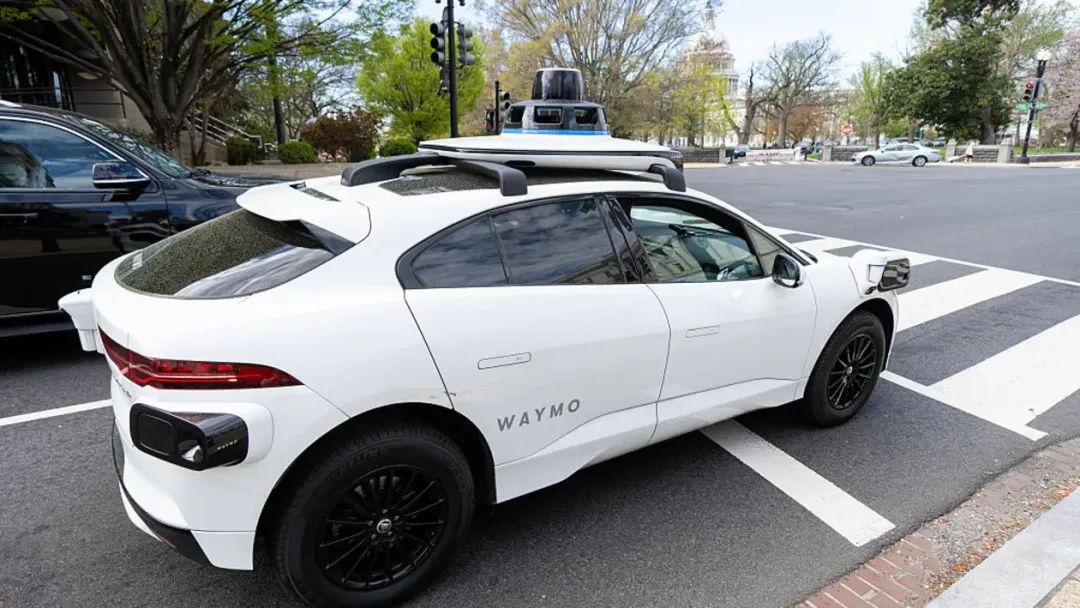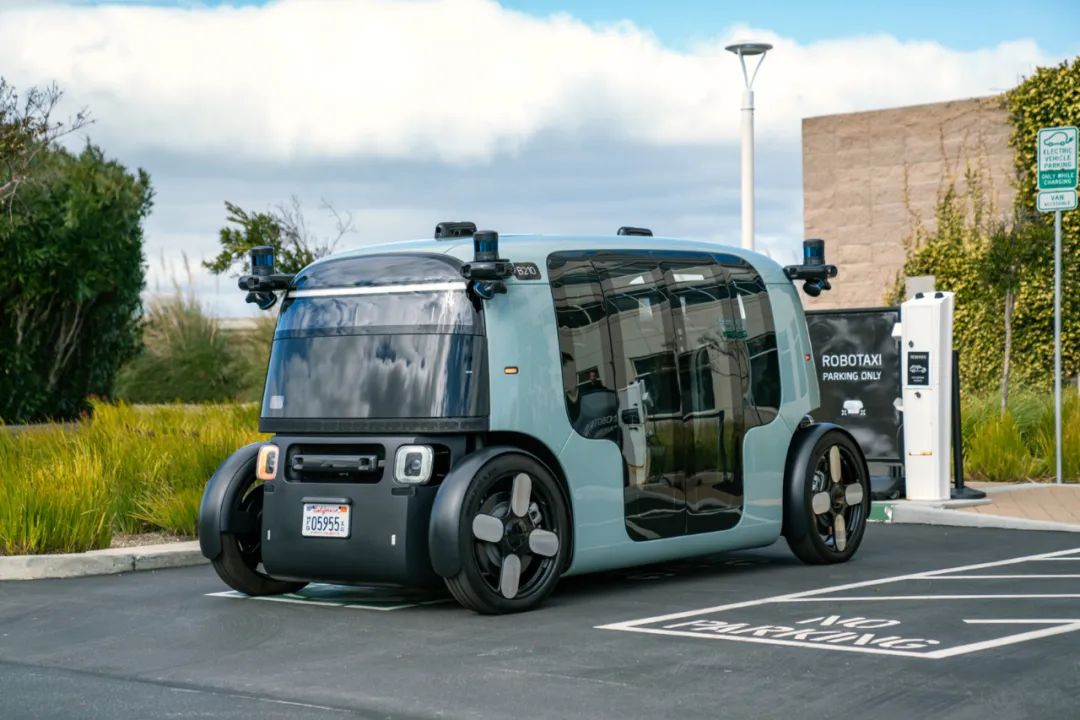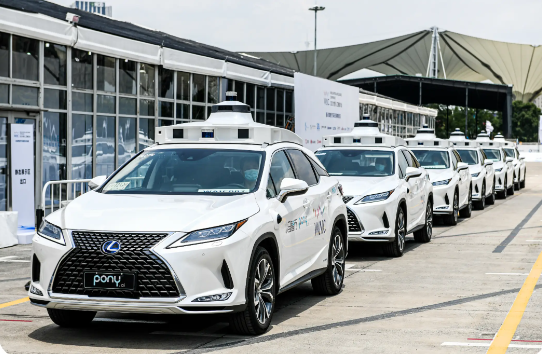Waymo Secures New York Testing License: Accelerating the Global Robotaxi Race with Safety at Forefront
![]() 08/25 2025
08/25 2025
![]() 427
427
On August 21, local time, the New York City Department of Transportation granted Waymo, a subsidiary of Alphabet, a license to test eight autonomous vehicles in Manhattan and Brooklyn, starting at the end of September. This announcement immediately captured the attention of the global technology and travel industries, with Silicon Valley and Wall Street buzzing with excitement. This milestone follows Waymo's achievement of completing 10 million driverless paid trips in May, marking another significant "speedup" in its journey. As the first company to obtain a permit for autonomous vehicle testing in New York, Waymo signals a new era in the Robotaxi (autonomous taxi) competition.
However, for all practitioners, the real focus transcends the "first license" and lies in the safety threshold it represents: New York boasts the highest traffic density and most erratic human driving in the world. Waymo's decision to bring its sensor array here amounts to publicly embracing the world's toughest "safety college entrance exam."
From Phoenix to New York: Waymo's "Triple Jump" and the U.S. Robotaxi Landscape
Waymo stands as a pioneer and leader in the U.S. Robotaxi sector. Google's self-driving project, Waymo's precursor, launched in 2009, initiating a lengthy journey of technological R&D and road testing. After over a decade of refinement, Waymo has amassed a profound technological foundation and vast operational data. Today, its fleet exceeds 1,500 vehicles, having completed 10 million driverless paid trips across multiple cities like Austin, Los Angeles, San Francisco, and Phoenix. Recently, Waymo announced road tests in Philadelphia and entry into the Atlanta market through a partnership with Uber, continuously expanding its commercial footprint.
In terms of technological path selection, Waymo adopts the mainstream "multi-sensor + high-precision map" approach, with lidar as the core sensing element. Its fifth-generation autonomous driving system is equipped with 5 lidars, 8 cameras, and 4D millimeter-wave radars. Through multi-sensor fusion and coordination with high-precision maps, the vehicle achieves comprehensive, high-precision perception of the surrounding environment, providing a high degree of redundancy for safe driving. However, this solution entails high costs, with a single vehicle costing approximately 7 times that of a Tesla, significantly hampering large-scale promotion.
Regarding commercial ecosystem construction, Waymo demonstrates a diversified layout. Its core Robotaxi business operates in multiple U.S. cities with a fee standard of approximately $2.5 per mile (about RMB 11.1 per kilometer). As economies of scale emerge, future prices are expected to converge with public transportation, further enhancing market competitiveness. Additionally, Waymo actively collaborates with automakers to provide autonomous driving technology solutions and conduct technology licensing. For instance, it has partnered with the Stellantis Group to modify the Pacifica model and reached data-sharing agreements with automakers like Jaguar and Zeekr. In April 2025, Waymo even joined forces with Toyota to expand cooperation boundaries in the autonomous driving field. Furthermore, Waymo has collaborated with travel platforms such as Uber and Moove, expanding service coverage and enhancing brand influence through integration of resources from all parties.
However, Waymo faces competition in the U.S. market. Tesla officially launched its autonomous taxi service in Austin, Texas, on June 22, 2025. Although currently limited to a small fleet and select invited customers, Tesla leverages its broad user base in the electric vehicle sector and continuous investment in intelligent driving algorithms. Unlike Waymo, Tesla adopts a pure vision approach, relying solely on cameras and AI technology. This reduces hardware costs but faces challenges in complex environments due to insufficient perception accuracy. Additionally, Zoox, under Amazon, is vigorously deploying Robotaxi services. Its factory in Hayward, California, has commenced operations, planning to produce 10,000 Robotaxis annually by 2027, and will compete directly with Waymo in major U.S. markets like Miami, Los Angeles, and Atlanta.

Current Status of Domestic Robotaxi Development: Thriving but Issues Emerge
The development of Robotaxi in China is also thriving, presenting a diverse landscape. Pony.ai has launched fully driverless Robotaxi paid operation services in Beijing, Shanghai, Guangzhou, and Shenzhen, covering over 2,000 square kilometers. In the second quarter of 2025, Pony.ai's total revenue increased by 75.9% year-on-year, with Robotaxi business revenue surging by 157.8% and fare income from passengers growing by over 300%, marking significant progress in commercialization. WeRide also achieved remarkable results, with revenue of RMB 127 million in the second quarter of 2025, up 60.8% year-on-year. Among this, Robotaxi business revenue was RMB 45.9 million, a year-on-year increase of 836.7%, accounting for 36.1% of total revenue for the second quarter. WeRide has also actively expanded its overseas market, signing cooperation agreements with Uber and the Dubai Road and Transport Authority to deploy commercial Robotaxi services in Dubai, becoming the only technology company in the world whose products hold autonomous driving licenses in six countries.

Furthermore, Baidu's "Luobo Kuaipao" operates in 10 cities including Wuhan, accumulating substantial operational data and user feedback. After obtaining investment from GAC, Didi Autonomous Driving has accelerated the mass production process and expects rapid technological iteration by leveraging its massive order data advantage in the travel market. Hello Inc. also announced its entry into the Robotaxi sector in 2024, aiming to secure a share of this emerging market by leveraging its user resources and operational experience in the shared travel sector.
However, the development of domestic Robotaxi also faces challenges. At the technical level, some companies have exposed shortcomings in actual operations. For example, during "Luobo Kuaipao's" pilot in Wuhan, vehicles repeatedly experienced "stiff stops" due to inability to accurately identify objects like plastic bags and construction barriers, severely impacting user experience. Socially, the low-price strategy of Robotaxi has impacted traditional online car-hailing and taxi industries, triggering protests from driver groups. Additionally, the popularization of autonomous driving technology may lead to massive driver unemployment, posing social employment pressures. In terms of policies and regulations, there are issues of multiple regulators and unclear powers and responsibilities. For example, overlapping areas are managed by multiple departments such as the Ministry of Transport, the Ministry of Industry and Information Technology, and the Ministry of Public Security, but key issues like remote safety officer qualification standards remain unclear. Local approval processes are cumbersome, requiring coordination among 12 departments and taking a long time. Moreover, the Road Traffic Safety Law has not yet made clear provisions on the division of responsibility for L4 autonomous driving accidents, leaving enterprises facing significant legal risks and difficulties in defining responsibilities.
The Importance of Autonomous Driving Safety: A Technological Appeal of Life Supremacy
Globally, approximately 1.3 million people die annually due to traffic accidents, with over 90% caused by driver distraction, fatigue, or improper operation. The core mission of autonomous driving technology is to enhance traffic safety and eliminate human-factor accidents at their root. Unlike common L2-level assisted driving, L4-level highly autonomous driving requires vehicles to fully and autonomously handle various complex scenarios without human intervention, truly shifting the safety logic from "human-machine co-driving" to "system-led," fundamentally avoiding collisions caused by human drivers' delayed reactions or errors. The dilemmas of traditional single-vehicle intelligence include:
Perception < 200 meters, occlusion equals blind spots;
Decision-making < 50 ms, computational power is the bottleneck;
Updates < monthly, OTA is too slow.
AI Network: Transforming "Single-Vehicle Safety" into "System Safety"
In single-vehicle intelligent driving mode, vehicles primarily rely on sensors (like cameras and radars) installed on the vehicle itself to perceive the surrounding environment. However, this method has limitations. For instance, in blind spots such as intersections, curves, and ramps, the detection range and accuracy of onboard sensors are severely impacted, making it difficult to detect potential dangers in advance. Additionally, faced with complex and ever-changing traffic scenarios like sudden accidents, irregular pedestrian behavior, and severe weather, single-vehicle intelligence algorithms often struggle to make decisions quickly and accurately, leading to misjudgments or sluggish responses by the system.
The emergence of the AI network provides new ideas and solutions to address these issues. Taking the MogoMind large model from Mushroom Auto as an example, it possesses powerful real-time global perception capabilities, integrating roadside real-time data to break through the perception limitations of onboard sensors. It accurately identifies pedestrians, non-motorized vehicles, and other vehicles within vehicle blind spots and promptly issues warnings through vehicle-to-everything (V2X) technology, providing a decision-making basis for drivers or autonomous driving systems in advance. When facing severe weather conditions, MogoMind's large model visual enhancement technology optimizes and processes images captured by onboard cameras, enhancing image clarity and discernibility to ensure vehicles can still clearly perceive road conditions in complex environments like low light, strong light interference, rain, and fog, thereby ensuring driving safety.

Moreover, MogoMind possesses real-time traffic condition analysis and information push capabilities, enabling it to monitor traffic conditions on the road ahead in real time, quickly identify information such as accidents, construction, and traffic control, and promptly push these accurate information to vehicles through the AI network. This helps drivers or autonomous driving systems plan optimal driving routes in advance to avoid congested or dangerous areas. In terms of pedestrian behavior recognition and prediction, MogoMind can qualitatively analyze whether pedestrians have dangerous intentions like jaywalking by analyzing factors such as pedestrians' body postures, walking speeds, and gaze directions, providing reasonable driving behavior suggestions, effectively improving the reliability and safety of traffic decisions.
Waymo's acquisition of a permit to test autonomous vehicles in New York undoubtedly injects new vitality into the global Robotaxi development and showcases an important breakthrough in the commercialization process of autonomous driving technology. However, whether in the fierce competition in the U.S. market or the booming development in the domestic market, autonomous driving safety remains the lifeblood of industry development. As Robotaxi progresses from the experimental fields of Silicon Valley to the steel forests of Manhattan, there is only one rule:
"Prove that you fear death more than humans before you are qualified to discuss business models."
In the future, with continuous technological progress and improvement, Robotaxi is expected to truly realize the vision of safe, efficient, and convenient travel, reshaping the global urban transportation landscape. Meanwhile, whoever prioritizes safety as infrastructure will own the "Manhattan moment" of Robotaxi.





